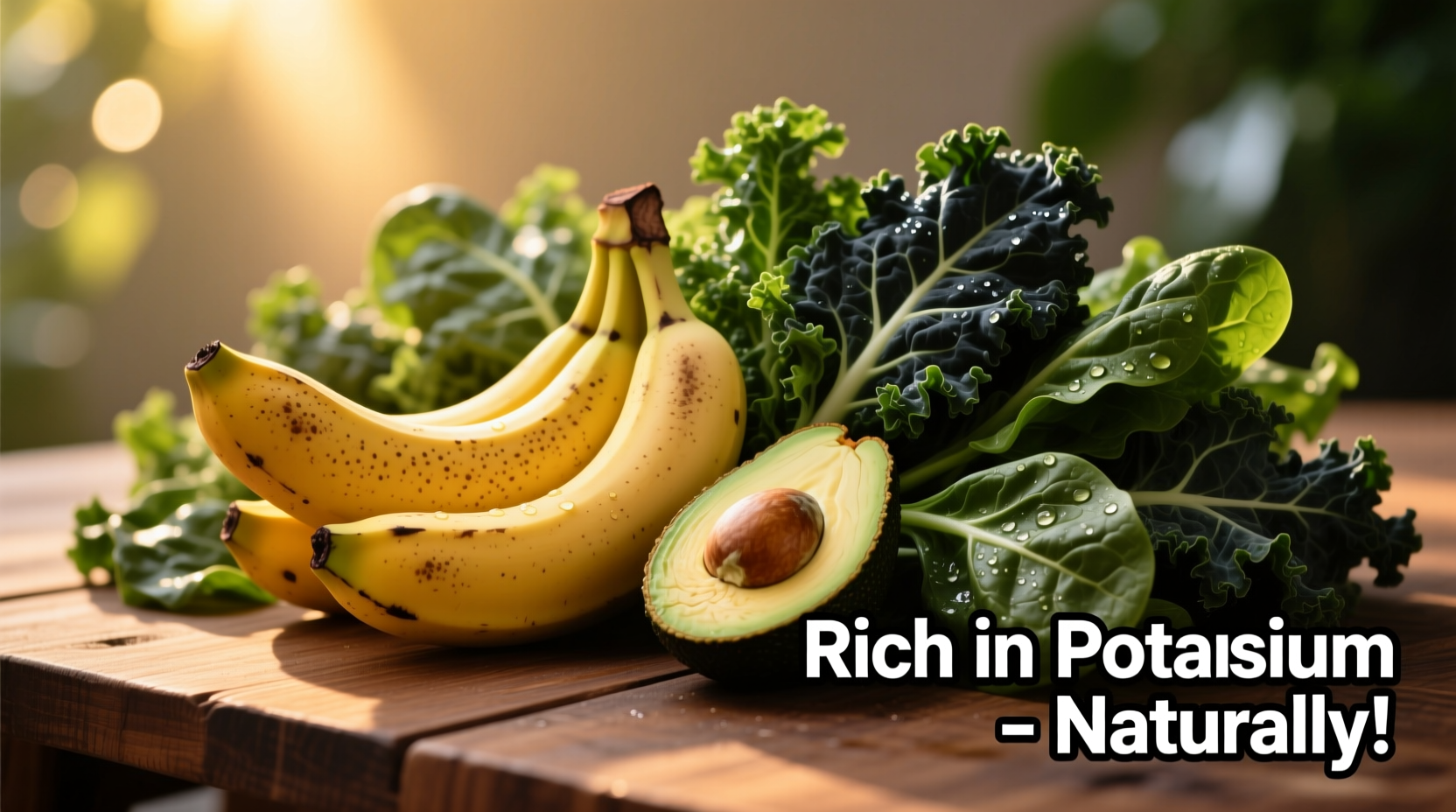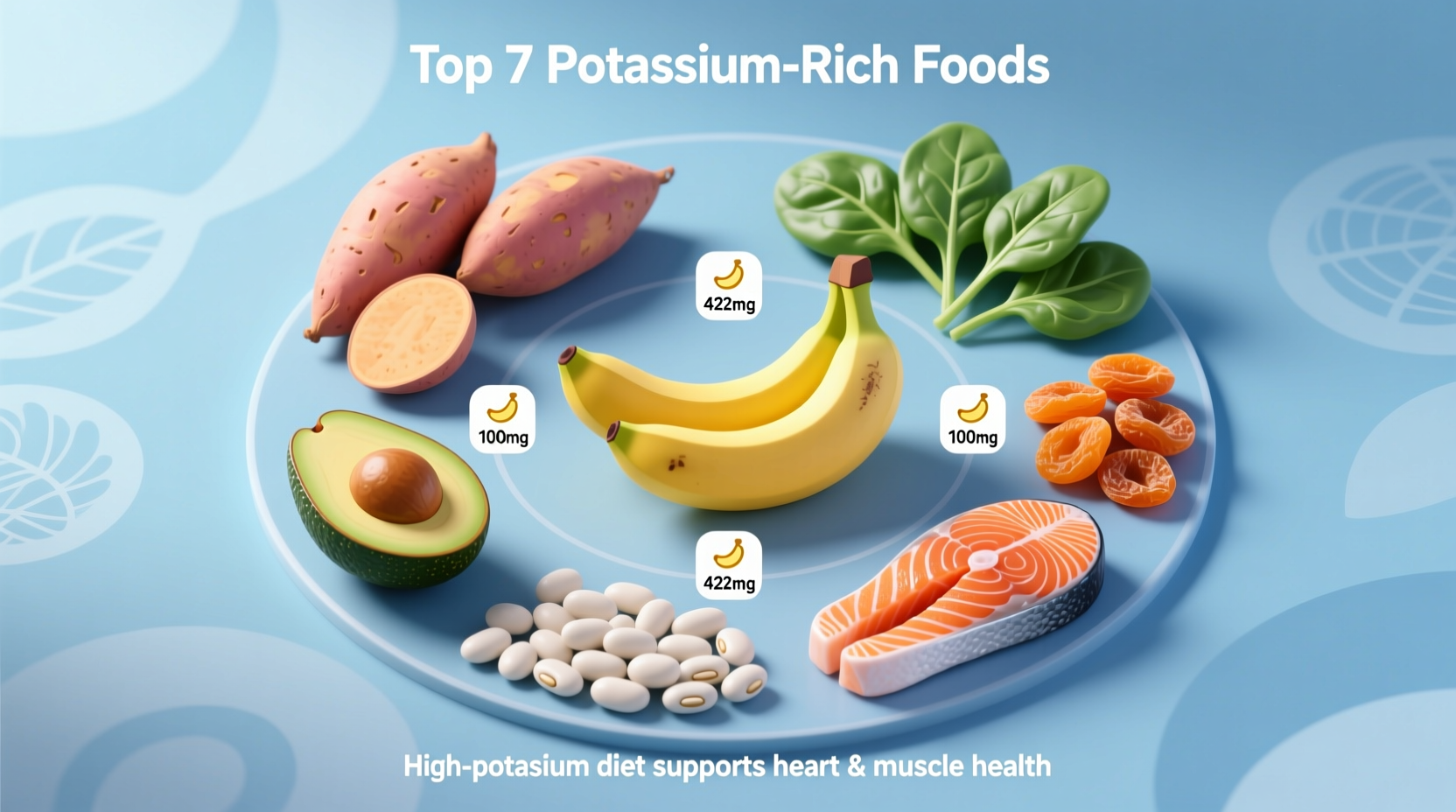The top potassium-rich foods include white beans (1,004mg per cup), sweet potatoes (542mg per medium potato), spinach (839mg per cooked cup), avocados (708mg per whole fruit), salmon (534mg per 3-ounce serving), bananas (422mg each), and mushrooms (305mg per cup). These natural food sources provide essential potassium for heart health, blood pressure regulation, and muscle function without supplements.
Discover how these powerhouse foods can transform your health while satisfying your taste buds. Potassium deficiency affects millions yet remains largely undiagnosed - understanding which foods deliver optimal potassium levels can significantly impact your cardiovascular health, energy levels, and overall wellbeing. This comprehensive guide reveals not just what food is high in potassium, but how to strategically incorporate these nutrient-dense options into your daily meals for maximum absorption and health benefits.
Why Potassium Matters More Than You Think
Modern diets often fall dangerously short of the recommended 2,600-3,400mg daily potassium intake. This essential mineral works as your body's natural blood pressure regulator by counteracting sodium's effects and relaxing blood vessel walls. Research from the American Heart Association shows that adequate potassium intake reduces stroke risk by 21% and significantly lowers hypertension rates.
Unlike supplements which can cause dangerous imbalances, whole food sources provide potassium alongside complementary nutrients that enhance absorption. Registered dietitians consistently recommend obtaining potassium through food rather than pills due to the synergistic effects of naturally occurring compounds.
Potassium Powerhouses: Food Categories Breakdown
Legumes and Beans
White beans reign supreme as the potassium king, delivering over 50% of your daily needs in a single cup. Other excellent options include:
- Lima beans (955mg per cup)
- Kidney beans (717mg per cup)
- Lentils (731mg per cooked cup)
Pro tip: Soaking dried beans overnight reduces cooking time while preserving potassium content. Canned varieties maintain most nutrients but rinse thoroughly to remove excess sodium.
Leafy Greens and Vegetables
Dark leafy greens offer exceptional potassium-to-calorie ratios. One cup of cooked spinach provides more potassium than a banana while containing just 41 calories. Other top performers:
- Swiss chard (961mg per cooked cup)
- Parsnips (679mg per cup)
- Beet greens (909mg per cooked cup)

Fruits That Outperform Bananas
While bananas get all the attention, several fruits contain significantly more potassium:
- Guava (688mg per cup)
- Apricots (427mg for 5 halves)
- Cantaloupe (473mg per cup)
- Oranges (447mg per large fruit)
Timing matters: Consuming potassium-rich fruits before or after exercise helps prevent muscle cramps and supports recovery. The natural sugars in fruit also enhance potassium absorption compared to supplements.
Potassium Content Comparison: Top 10 Foods
| Food (Serving Size) | Potassium (mg) | % Daily Value | Best Preparation Method |
|---|---|---|---|
| White beans (1 cup) | 1,004 | 29% | Steamed with garlic |
| Spinach (1 cup cooked) | 839 | 24% | Sautéed with olive oil |
| Avocado (1 whole) | 708 | 20% | Raw in salads |
| Sweet potato (medium) | 542 | 16% | Baked with skin |
| Salmon (3 oz) | 534 | 15% | Baked or grilled |
Data sourced from USDA FoodData Central (2023 database). Note that cooking methods significantly impact final potassium content - boiling can leach up to 60% of potassium into water, while steaming preserves more nutrients.
Special Considerations for Different Health Needs
While potassium benefits most people, certain health conditions require careful management:
For Heart Health
The DASH diet (Dietary Approaches to Stop Hypertension) emphasizes potassium-rich foods to lower blood pressure. Combining high-potassium foods with reduced sodium intake creates a powerful one-two punch against hypertension. Research published in the NIH Health Professional Fact Sheet shows this combination can lower systolic blood pressure by 11 mmHg in just 8 weeks.
For Kidney Health
Individuals with chronic kidney disease must carefully monitor potassium intake as impaired kidneys struggle to remove excess potassium. The National Kidney Foundation recommends working with a renal dietitian to determine appropriate portions. Boiling high-potassium vegetables like potatoes can reduce potassium content by up to 50% through a process called leaching.
Athletes and Active Individuals
Sweat depletes potassium stores significantly during intense exercise. Sports nutritionists recommend consuming potassium-rich foods within 30 minutes post-workout to prevent cramps and support recovery. Tart cherry juice (342mg per cup) has emerged as a popular recovery beverage due to its dual benefits of potassium and anti-inflammatory compounds.
Common Potassium Myths Debunked
Myth: Bananas are the best potassium source
Reality: While convenient, bananas rank surprisingly low compared to many vegetables and legumes. One medium sweet potato contains more potassium than two bananas.
Myth: Potassium supplements are safe for everyone
Reality: Supplements can cause dangerous heart arrhythmias in people with kidney issues. Always consult your physician before taking potassium supplements.
Myth: Cooking destroys all potassium
Reality: While boiling leaches potassium, steaming and roasting preserve most of this water-soluble mineral. Some foods like tomatoes actually increase potassium bioavailability when cooked.
Practical Integration Strategies
Transform your potassium intake with these chef-approved techniques:
- Smoothie boost: Add a handful of spinach to fruit smoothies - you won't taste it but will gain 167mg of potassium per cup
- Rice replacement: Substitute half your white rice with cauliflower rice and add white beans for a potassium-packed side dish
- Smart snacking: Keep pre-portioned avocado halves with everything bagel seasoning for a 200+mg potassium snack
- Salad upgrade: Top greens with roasted sweet potato cubes, mushrooms, and pumpkin seeds for a 900mg potassium powerhouse
Professional chefs recommend pairing potassium-rich foods with healthy fats like olive oil or avocado to enhance absorption of fat-soluble vitamins that work synergistically with potassium.
Tracking Your Potassium Intake
Most people consume only 2,000-2,600mg daily despite needing 2,600-3,400mg. Use these practical tracking methods:
- Download a food tracking app that includes potassium data
- Follow the "half-plate rule" - fill half your plate with potassium-rich vegetables
- Implement "potassium days" - dedicate specific meals to high-potassium foods
- Keep a visual chart of top potassium foods on your fridge
Registered dietitians note that consistent moderate intake throughout the day works better than consuming large amounts at one meal, as the body can only process about 1,000mg per sitting.











 浙公网安备
33010002000092号
浙公网安备
33010002000092号 浙B2-20120091-4
浙B2-20120091-4